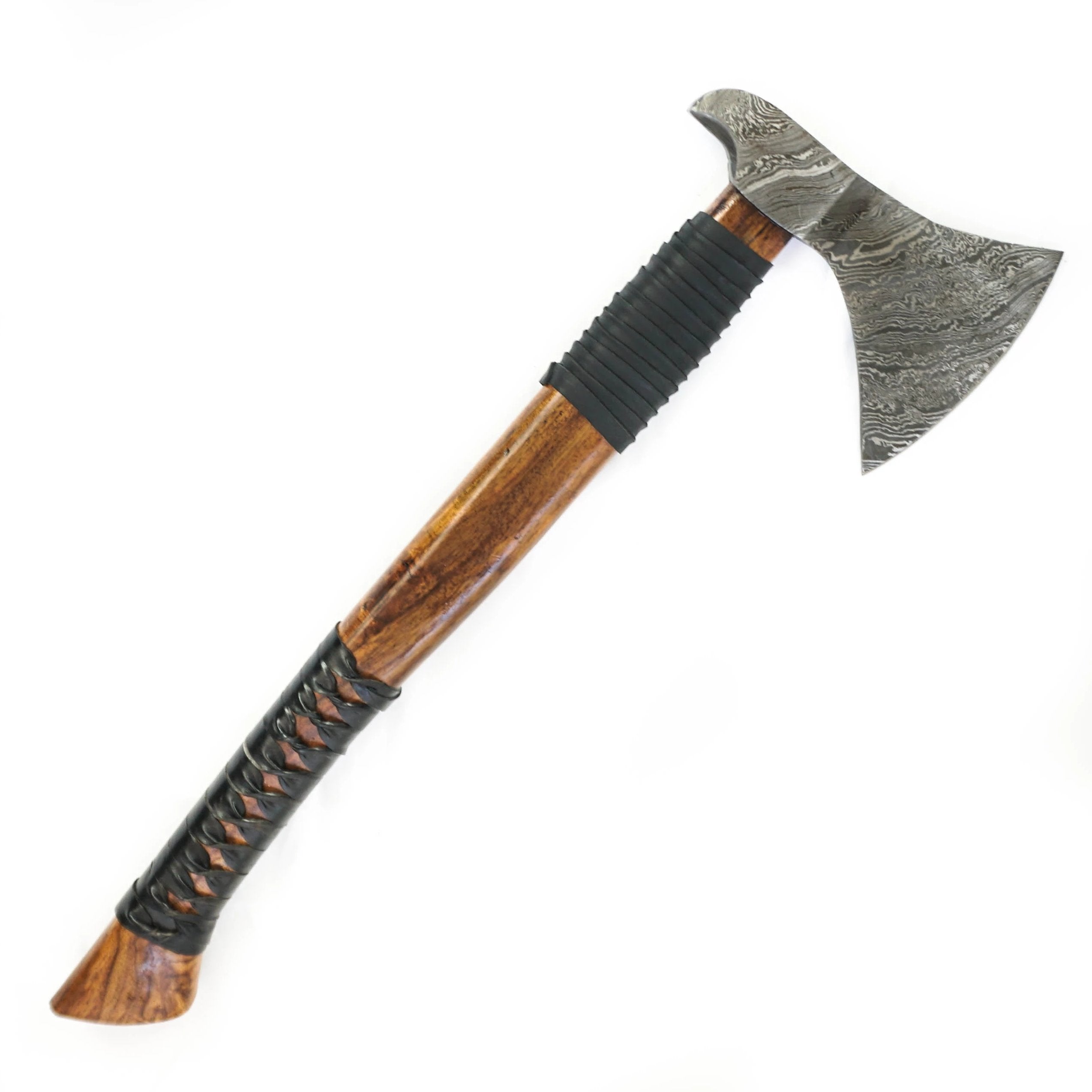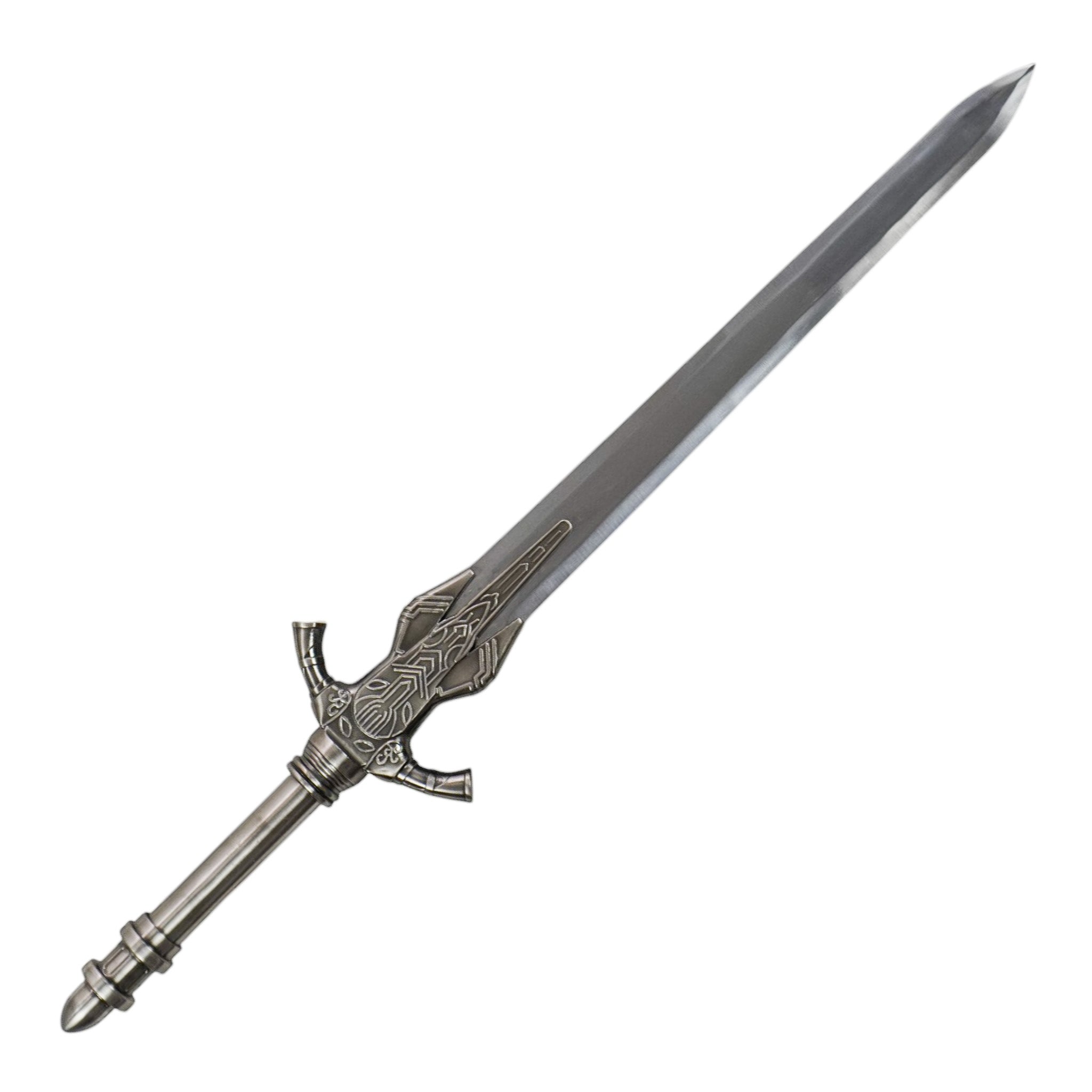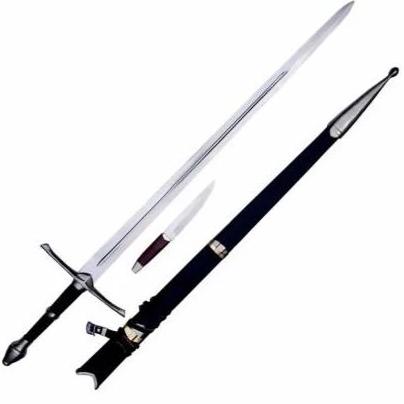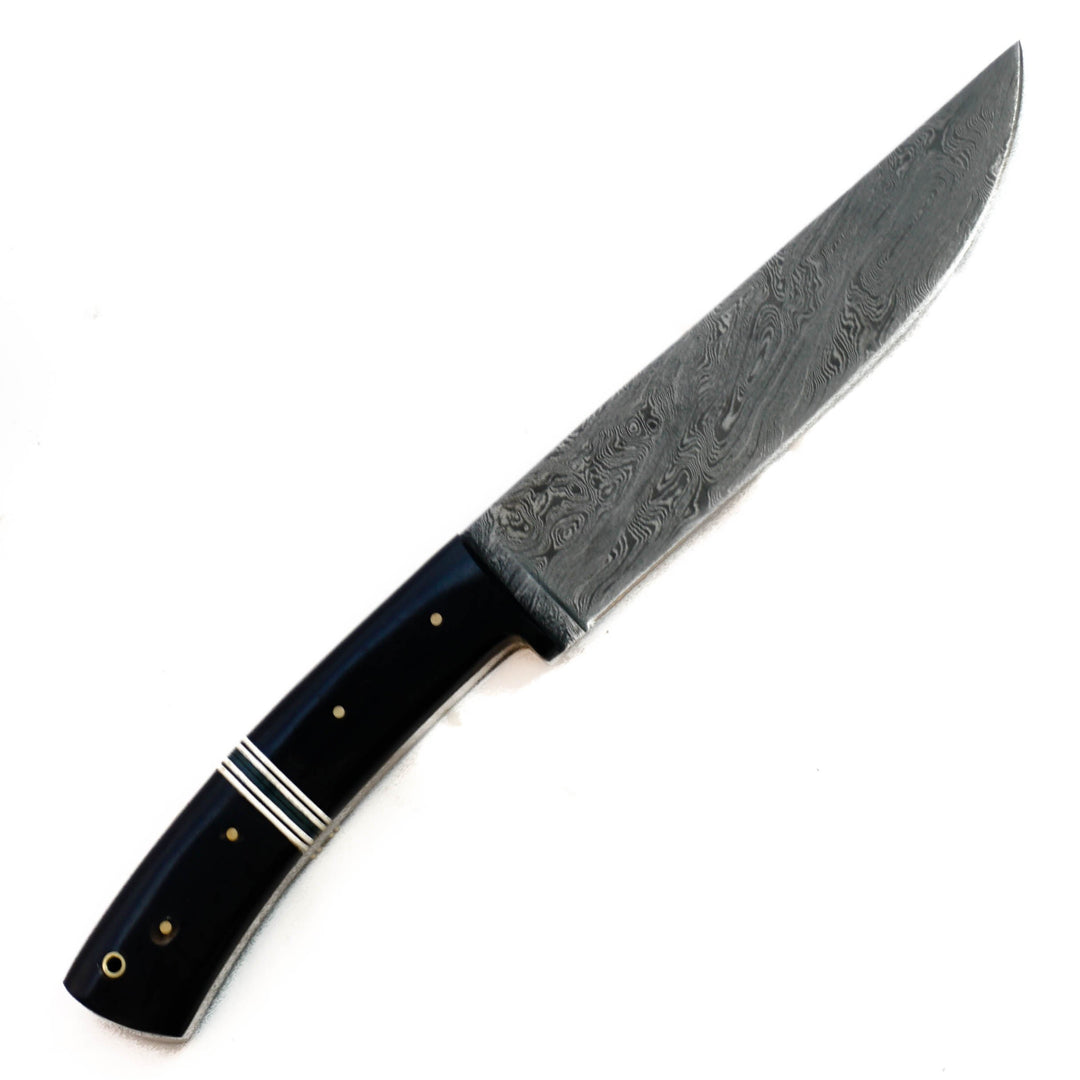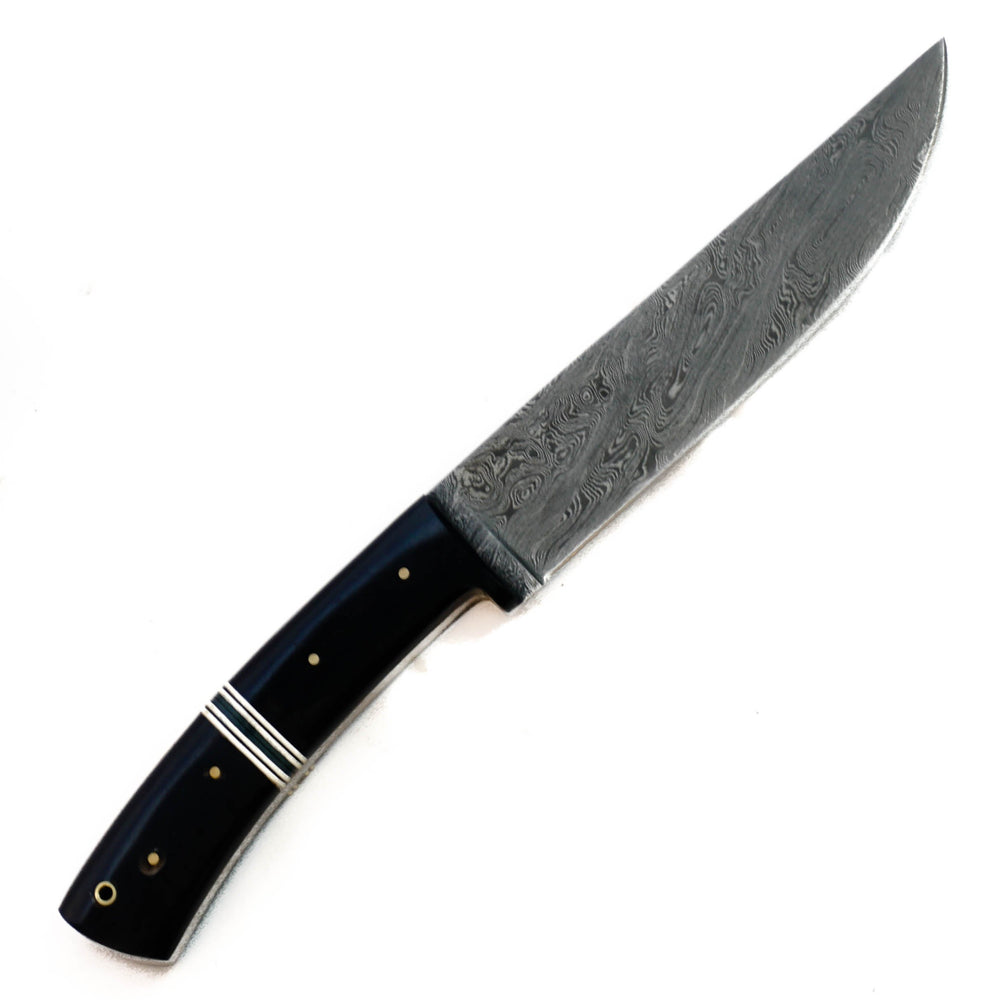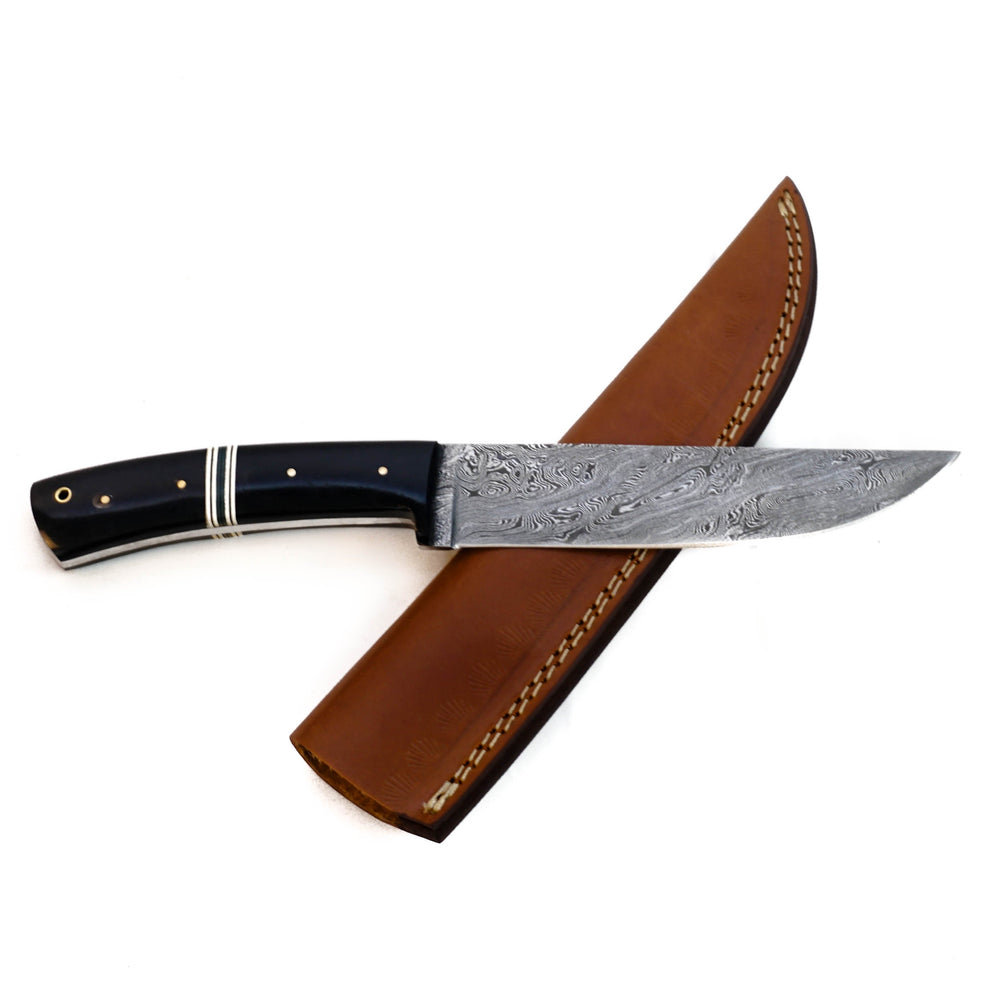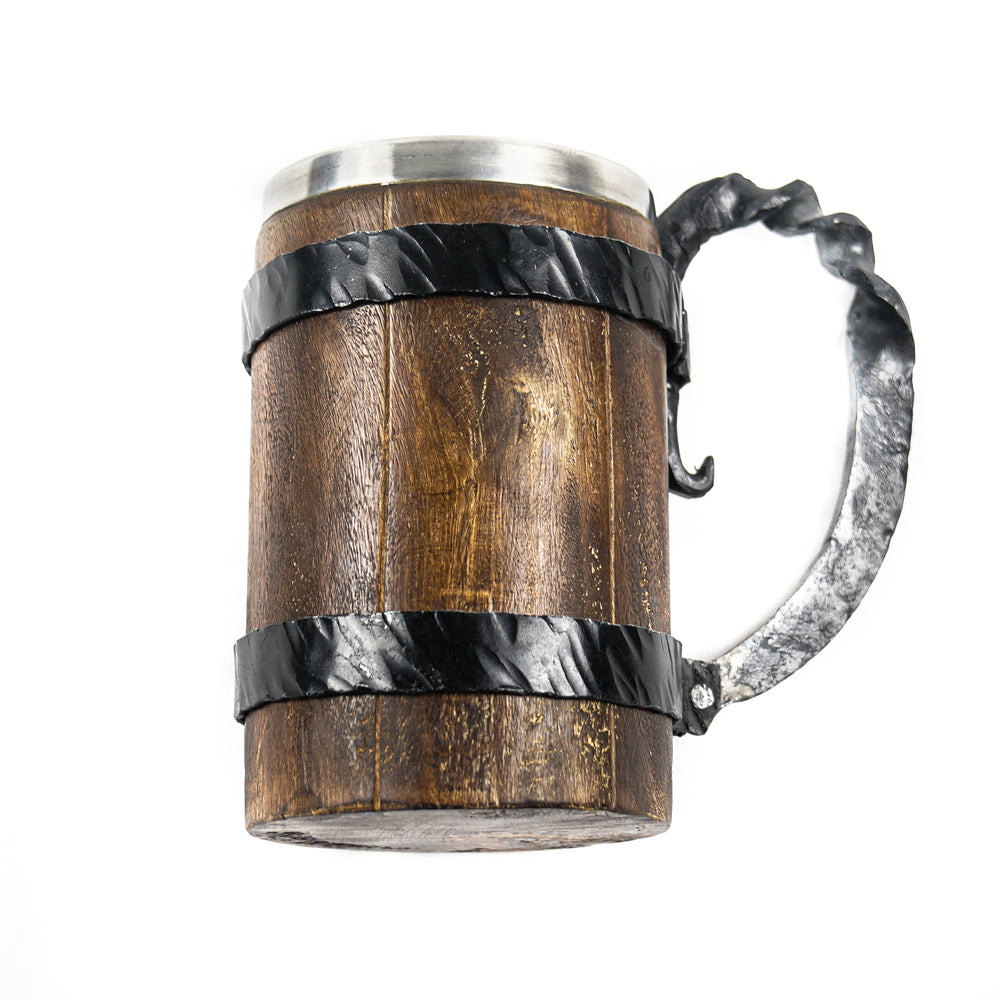Step into a rich history with the Butcher Knife, a tool that has journeyed through time from the rugged terrains of the 18th-century mountains to the modern kitchens and butcher shops of today. Initially a multifunctional tool used by mountain men for tasks as varied as skinning beavers to personal defense, the butcher knife has stood the test of time, proving its enduring utility and significance.
With the rise of culinary arts and the global meat industry, the butcher knife has found its calling, excelling in the art of meat preparation. Its robust blade is adept at splitting, stripping, and precision cutting. The knife's lineage shares roots with the revered French chef's knife, carving knife, and cleaver, each with its distinctive purpose, be it general utility or slicing thin cuts of meat.
Blade Craftsmanship
Diving deep into the knife's construction, the blade is a masterpiece, crafted from Pattern welded Damascus steel. This distinctive steel undergoes a meticulous process:
-
Layering: Made up of 11 steel pieces, the blade is folded five times, culminating in 352 intricate layers. This complex layering process speaks volumes about the blade's strength and flexibility.
-
Hardness: The blade achieves a Rockwell hardness rating of 55-56 HRC, striking the right balance between sharpness and durability.
-
High Carbon Steel: The integration of 1095 steel, the pinnacle of high carbon steels, ensures that the knife possesses the sturdiness needed for intense tasks while retaining its edge.
Key Knife Features
-
Handle: Crafted from genuine buffalo bone, complemented by elegant brass bolsters, adding to the knife's aesthetics and grip.
-
Overall Length: 14 inches, giving the wielder substantial control and precision.
-
Sheath: A bespoke leather sheath, ensuring that the blade is well protected and easy to carry.
-
Blade Material: The heart of the knife, the blade, consists of a sophisticated blend of Carbon Steel (#43 and #40) and High Carbon Steel 1095, resulting in 352 layers after five folds.

